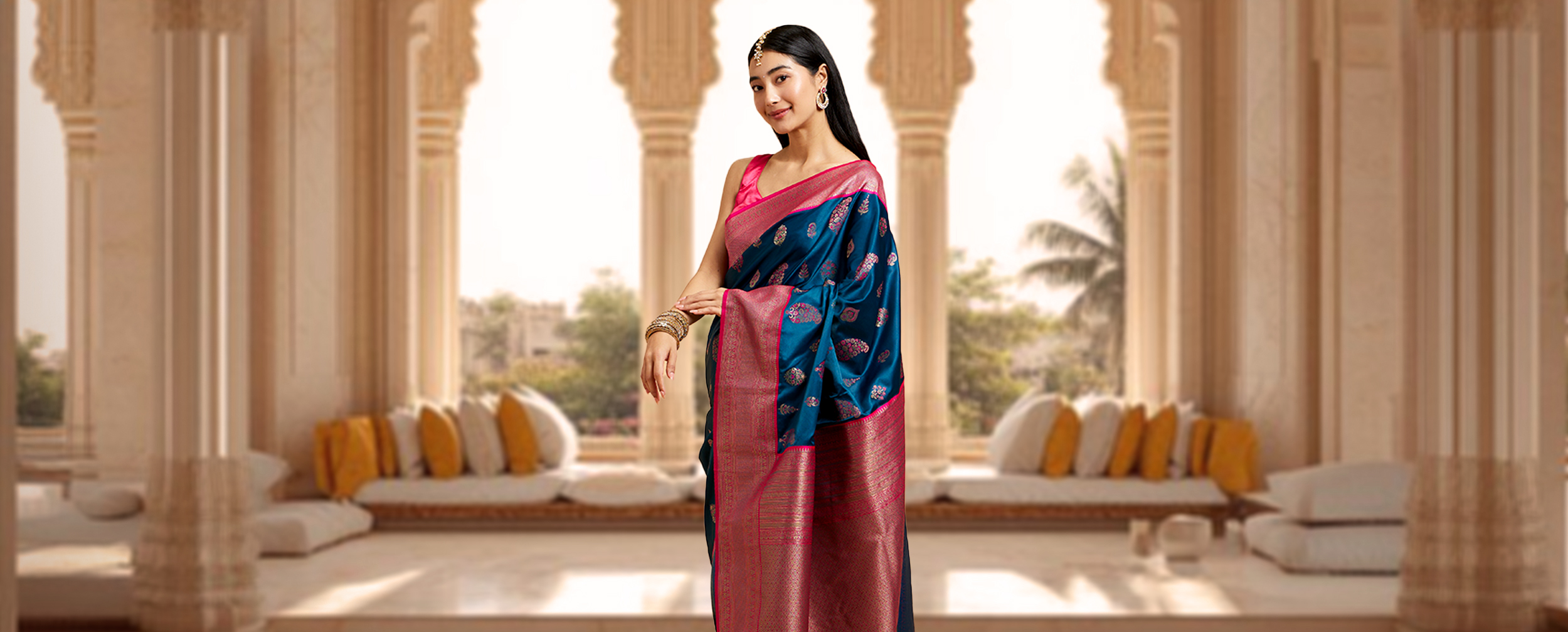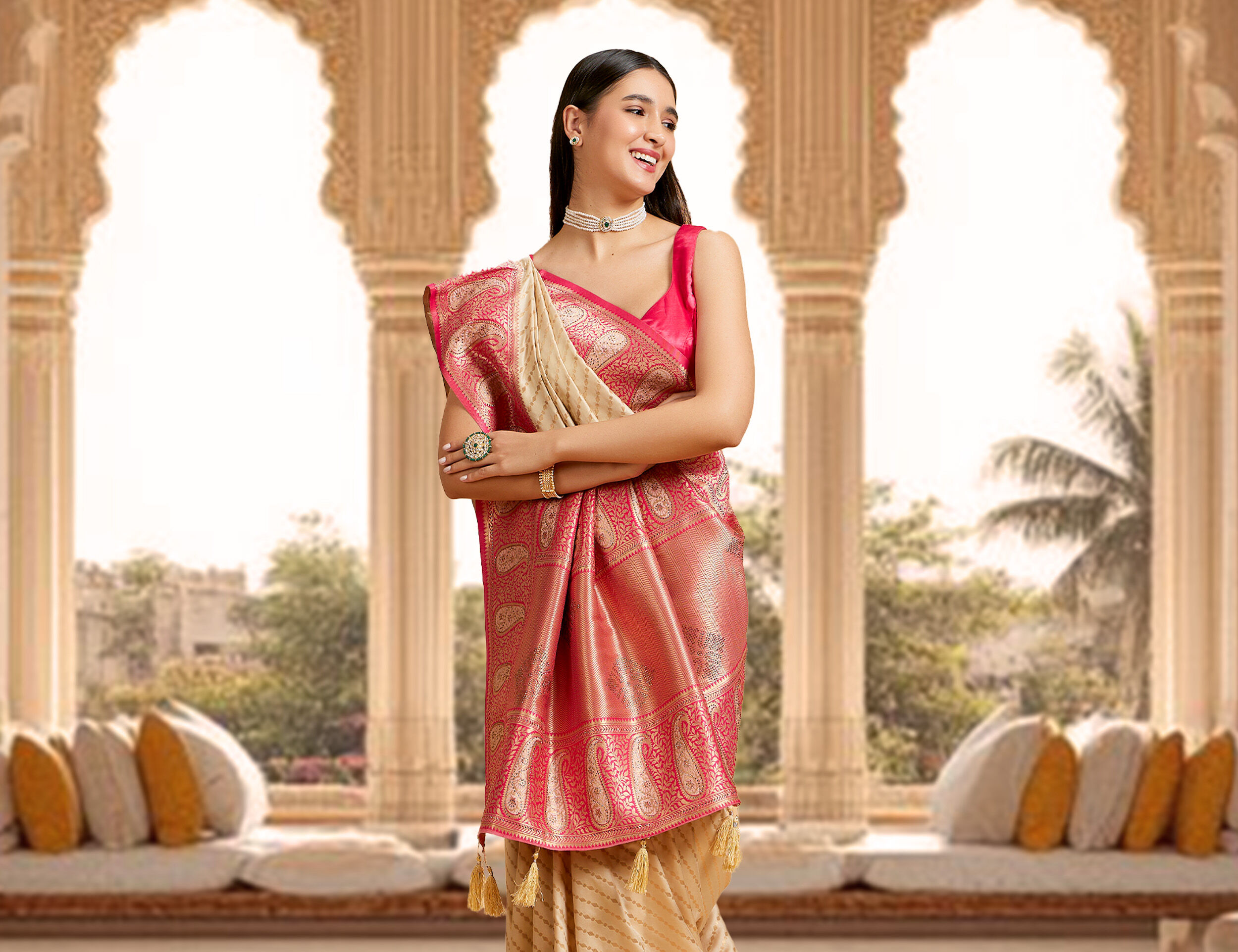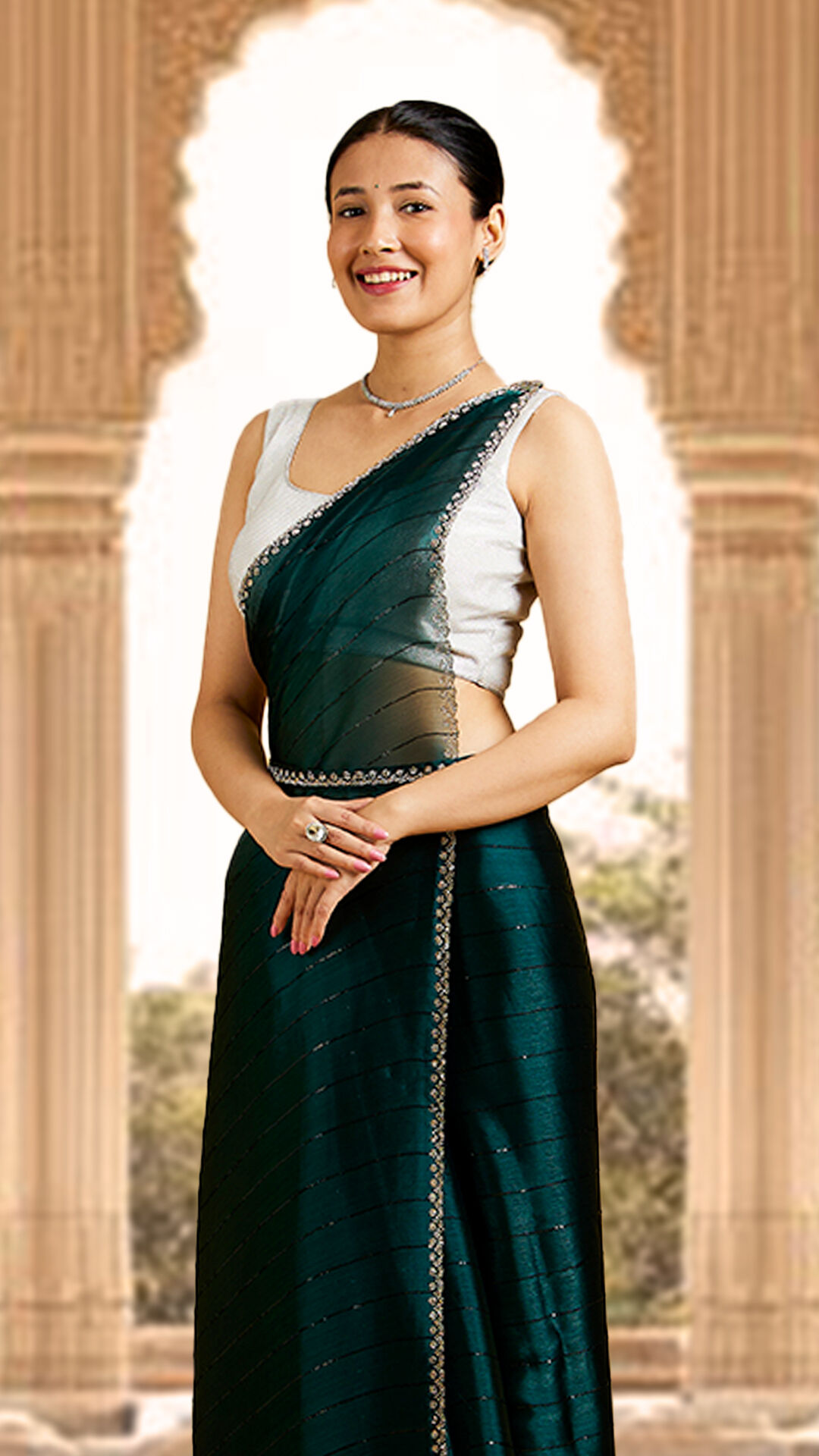STORIES BY MANYAVAR & MOHEY

Lifestyle
Exploring Regional Saree Styles in India: Saree Draping & Styling Tips
Date 29 January 2025 Reading time: 7-10 mins
Who doesn't love sarees! The intricate weave, the regal borders, the artfully pleated pallu - they all come together to tell a story of the region it hails from.
In a country as diverse as ours, saree styles in India are as varied as the landscapes and cultures that shape them. From the rich silks of the South to the breezy cottons of the East, each regional saree styles in India is a testament to the craftsmanship and aesthetic sensibilities of its people.
From weaves to saree styling tips- let's take a closer look at what makes each regional saree tradition in India so unique and captivating.
Understanding the Significance of Saree Styles in India
The six yards of wonder is not just a garment; it's a canvas that reflects the cultural ethos of a region. The choice of fabric, the motifs woven into it, the colours favoured - the saree styles in India all have deep roots in local traditions.
For instance, the Banarasi sarees from Uttar Pradesh are known for their heavy silk, intricate zari work and opulent designs. On the other hand, Chanderis from Madhya Pradesh, with their lightweight fabric, mirror the understated grace of the region's royal heritage.
Even the way saree styles in india is draped can speak volumes about its cultural context. The Nivi style, one of the popular saree draping styles, is believed to have originated in Andhra Pradesh, while the Seedha Pallu drape, common in Gujarat and parts of Rajasthan, lends itself beautifully to the region's vibrant mirror work and embroidery.
The Art of Saree Styling: Tips
While traditional saree looks are inherently graceful, the right styling can elevate your look from charming to absolutely captivating. Here are a few saree styling tips to keep in mind:
- Choose a blouse that complements your saree in terms of colour, neckline and sleeve length. A well-fitted blouse can make all the difference!
- Experiment with different drapes to find the one that flatters your body type and personal style best.
- One of the most important saree styling tips is to asccessorise thoughtfully. Choose jewellery and accessories that accentuate rather than overpower it.
- Don't be afraid to mix and match.
Remember, the key to wear your traditional saree looks is confidence and let your personal style shine through with the help of these saree styling tips.
Exploring Different Saree Draping Styles
One of the most fascinating aspects is the sheer variety of draping styles across regions. Here are a few notable ones:
- Nivi drape: One of the most common draping styles, involves wrapping the saree around the waist, with pleats in the front and the pallu draped over the left shoulder.
- Seedha Pallu: Popular in Gujarat and parts of Rajasthan, this is one of the must-try draping styles which has the pallu draped in the front from right to left.
- Mohiniattam drape: Originating in Kerala, this drape is characterised by a fan-like pleated pallu in the front, with the rest of the saree wrapped around in a dhoti style.
- Halakki Vokkaliga drape: Unique to Karnataka, this drape involves tying the pleats at the back, with the pallu draped in the front from left to right.
Traditional Saree Looks in Different Regions
Now that we've got the basics covered, let's dive deep into the traditional saree looks of different regions and what makes them so special.
North India
The northern states of India are known for their regal textiles and opulent embellishments. Some of the most notable ones from this region include:
- Banarasi sarees: Hailing from Varanasi, these sarees are crafted from the finest silk and adorned with intricate zari work, often featuring elaborate floral and foliate motifs.
- Chikankari sarees: Originating in Lucknow, these sarees are famous for their delicate white-on-white embroidery, done by hand using a needle and thread.
- Phulkari sarees: Native to Punjab, these traditional saree looks feature vibrant embroidery in floral patterns, often covering the entire body of the saree.
The traditional saree looks from this region are characterised by their heavy fabrics, rich colours and intricate embellishments - perfect for grand occasions and weddings.
South India
The southern states are home to some of the most iconic saree weaving traditions in India. Here are a few notable ones:
- Kanjeevaram sarees: Originating in Tamil Nadu, these silk sarees are known for their heavy zari borders, contrasting pallus and rich colours like deep reds, purples and greens.
- Mysore silk sarees: Native to Karnataka, these sarees are made from pure mulberry silk and are known for their soft texture and subtle sheen.
- Kasavu sarees: Hailing from Kerala, these sarees are characterised by their off-white base and golden borders, often worn for auspicious occasions.
South Indian sarees are all about the richness of the silk, the weight of the zari and the elegance of the drape.
East India
The eastern states of India boast some of the finest cotton and silk sarees in the country. Some notable traditions include:
- Baluchari sarees: Originating in West Bengal, these sarees feature intricate woven motifs depicting scenes from mythology and folklore.
- Sambalpuri Ikat sarees: Native to Odisha, these sarees are known for their distinctive Ikat weave, created by dyeing the threads before weaving them together.
- Muga silk sarees: Hailing from Assam, these sarees are made from the golden Muga silk, known for its natural sheen and durability.
The saree styles in India from this region are characterised by their lightweight fabrics, intricate weaves and nature-inspired motifs.
West India
The western states of India are known for their vibrant colours, mirror work and bandhani tie-dye. Some notable saree traditions include:
- Bandhani sarees: Originating in Gujarat and Rajasthan, these sarees feature intricate tie-dye patterns, often in vibrant colours like red, yellow and green.
- Paithani sarees: Native to Maharashtra, these sarees are known for their distinctive border and pallu designs, often featuring peacock and lotus motifs.
- Patola sarees: Hailing from Gujarat, these sarees are made using the double Ikat weaving technique, resulting in vibrant, geometric patterns.
No matter which part of India you're from, there's no denying the allure of a beautifully draped designer saree. From the regal Banarasi to the opulent zari saree, each saree is a tribute to the rich crafting heritage of India at Mohey.
Falling in Love with Sarees Once Again
A traditional saree is so much more than just six yards of fabric. It's a celebration of our country's textile legacy and an ode to the skills of our weavers and artisans. The next time you drape a saree, take a moment to appreciate the significance of each element, saree draping styles and saree styles in India.
Explore our stunning collection of traditional and contemporary sarees at Mohey, and find the perfect one to celebrate your unique style and cultural roots. Enjoy draping with these amazing saree styling tips and saree draping styles!







